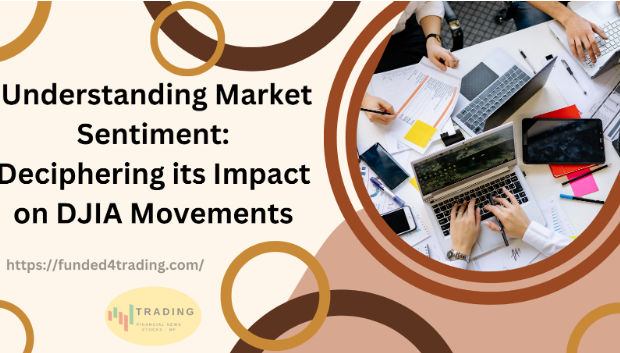Introduction:
In the dynamic realm of finance, where every fluctuation can send ripples across global markets, understanding market sentiment becomes imperative. Investors, analysts, and traders often turn to various indicators to gauge the pulse of the market. One such indicator that holds significant weight is the Dow Jones Industrial Average (DJIA), a benchmark index reflecting the performance of 30 major companies in the United States. In this blog, we will explore the intricate relationship between market sentiment and its profound impact on DJIA movements.
The Essence of Market Sentiment:
Market sentiment is the collective mood or attitude of market participants towards a particular asset or the market as a whole. It is influenced by a myriad of factors, including economic indicators, geopolitical events, corporate earnings, and investor psychology. Traders and investors closely monitor market sentiment as it can serve as a compass, guiding them through the turbulence of financial markets.
Market sentiment is often categorized into three main types: bullish, bearish, and neutral. A bullish sentiment prevails when investors are optimistic about the market’s future, expecting prices to rise. Conversely, a bearish sentiment emerges when pessimism dominates, leading investors to anticipate a decline in prices. Neutral sentiment reflects a state of equilibrium, where investors neither lean towards optimism nor pessimism.
The DJIA as a Barometer of Market Sentiment:
The Dow Jones Industrial Average, established by Charles Dow in 1896, has earned its reputation as a reliable indicator of the U.S. stock market’s health. Comprising 30 blue-chip stocks from diverse sectors, the DJIA is often considered a barometer of market sentiment due to its ability to reflect the overall performance of the U.S. economy.
When market sentiment is positive, investors tend to display confidence, leading to increased buying activity. This influx of buying interest typically translates into an upward movement in the DJIA. On the contrary, during times of negative sentiment, investors may adopt a risk-averse stance, triggering selling pressure and causing the DJIA to experience declines.
Psychology and Market Sentiment:
Understanding market sentiment is as much about psychology as it is about economic indicators. The market is inherently driven by human emotions such as fear and greed. In times of uncertainty, fear may dominate, prompting investors to sell assets and seek safer havens. Conversely, during periods of optimism, greed may prevail, fueling buying frenzies.
Psychological factors play a crucial role in shaping market sentiment and subsequently influencing the DJIA. Analysts often turn to sentiment indicators, such as the CBOE Volatility Index (VIX) or investor surveys, to gain insights into the prevailing mood of market participants.
The Impact of Economic Events on DJIA Movements:
Economic events, both domestic and global, can act as catalysts for shifts in market sentiment and subsequently impact the DJIA. For instance, positive economic data, such as strong employment figures or robust GDP growth, can instill confidence among investors, leading to a bullish sentiment and an upward trajectory in the DJIA.
Conversely, unexpected events, such as geopolitical tensions or economic downturns, can breed uncertainty and pessimism, prompting investors to adopt a bearish stance and potentially causing the DJIA to decline. In this interconnected global economy, factors like trade tensions, political developments, and central bank decisions can send ripple effects across markets and influence the sentiment reflected in the DJIA.
Conclusion:
Market sentiment serves as a compass for investors navigating the complexities of financial markets, and the DJIA stands as a prominent reflection of this sentiment. The symbiotic relationship between market sentiment and DJIA movements underscores the dynamic nature of financial markets, where psychology and economic factors converge.
As we delve into the intricate dance between sentiment and the DJIA, it becomes evident that staying attuned to the collective mood of investors is essential for making informed financial decisions. Whether bullish, bearish, or neutral, market sentiment remains a powerful force that can sway the fortunes of the DJIA and, by extension, the broader financial landscape. In the ever-evolving world of finance, mastering the art of interpreting market sentiment is an invaluable skill for those seeking to navigate the unpredictable currents of the market with finesse and acumen.

